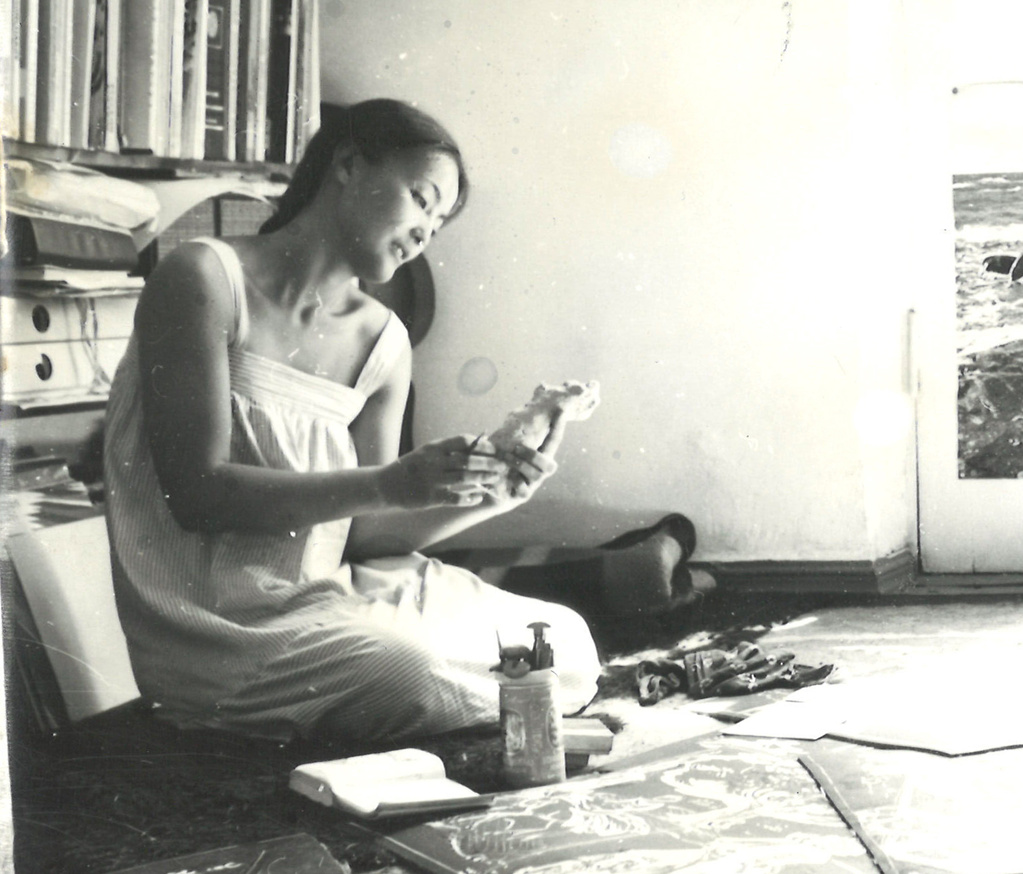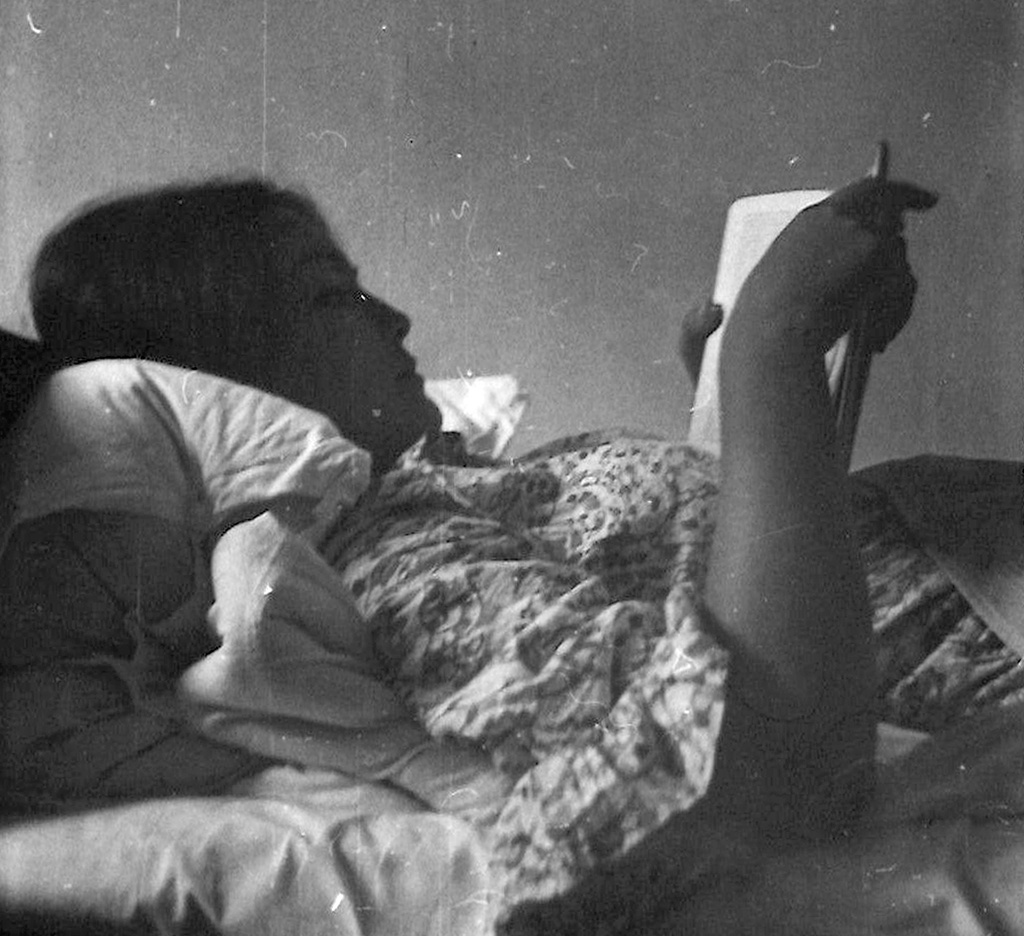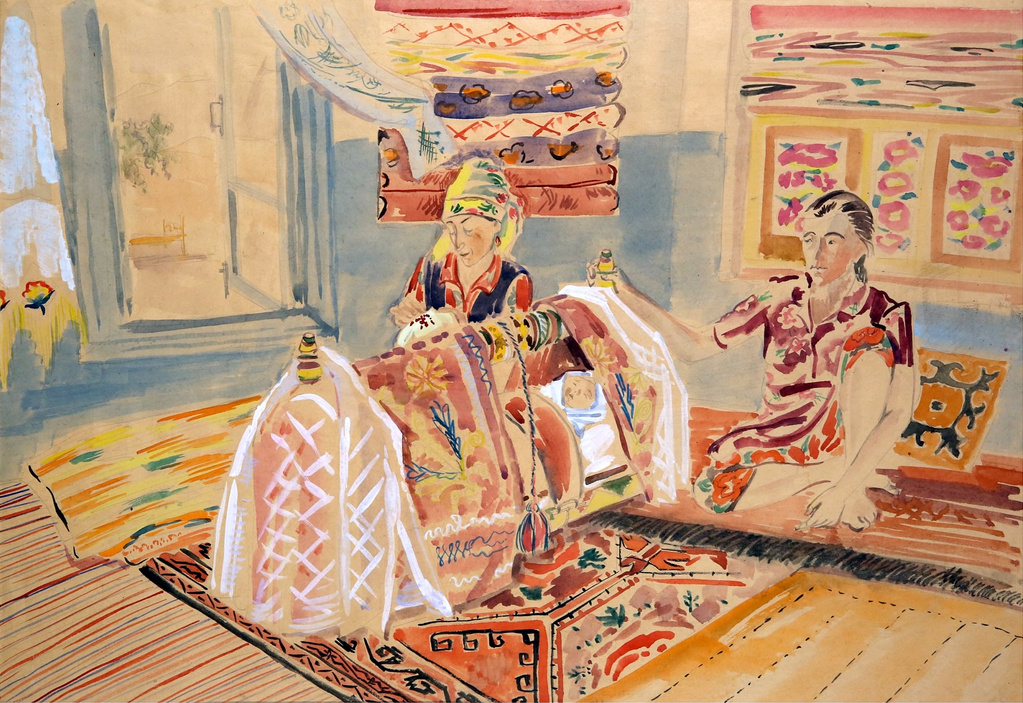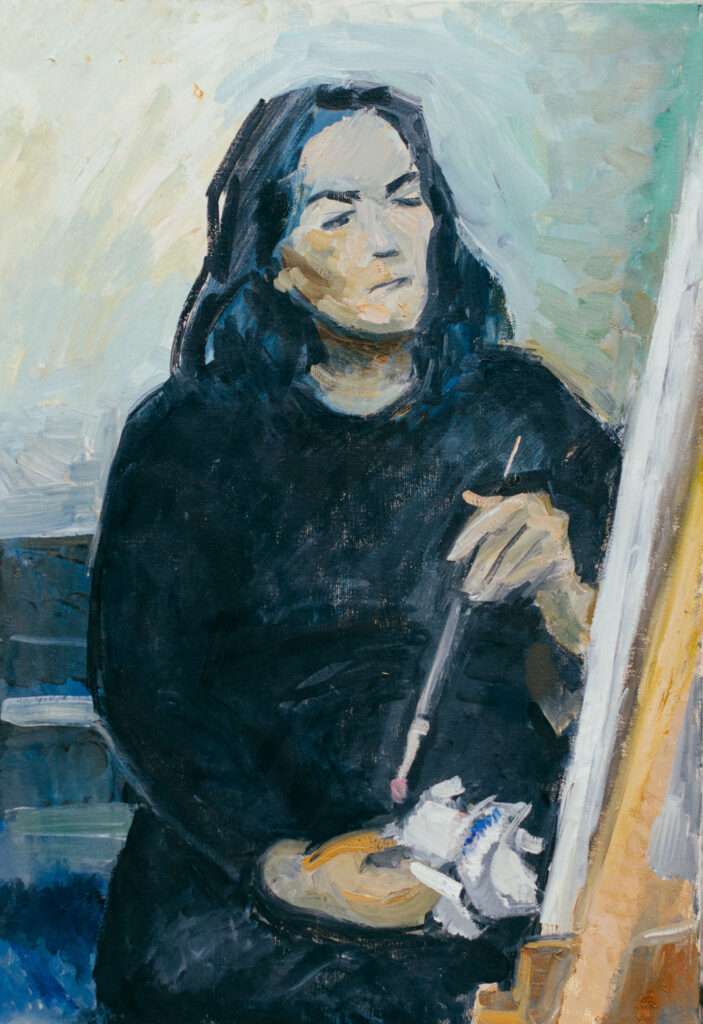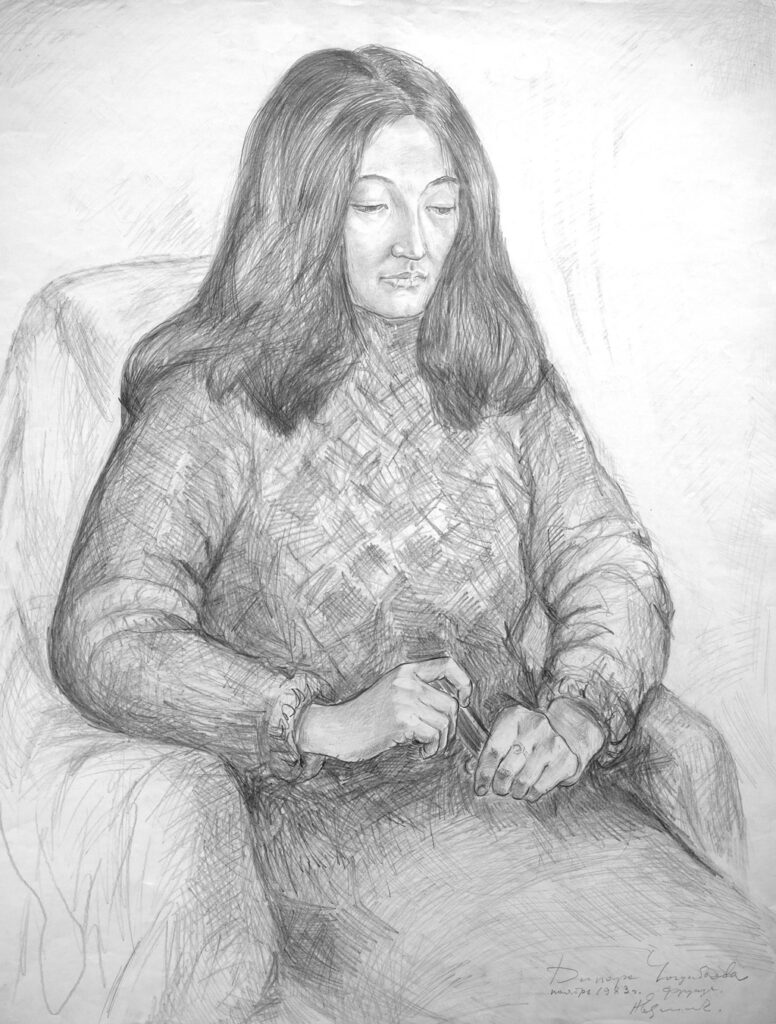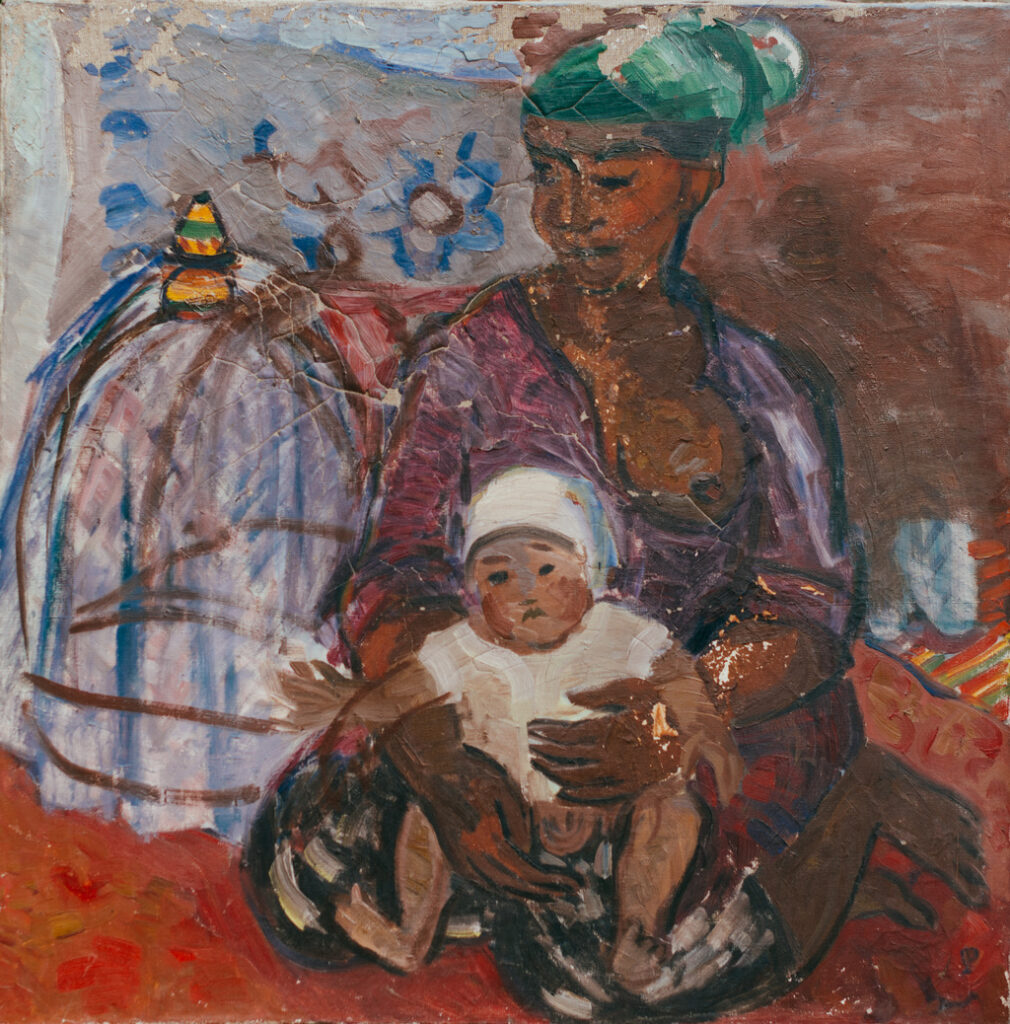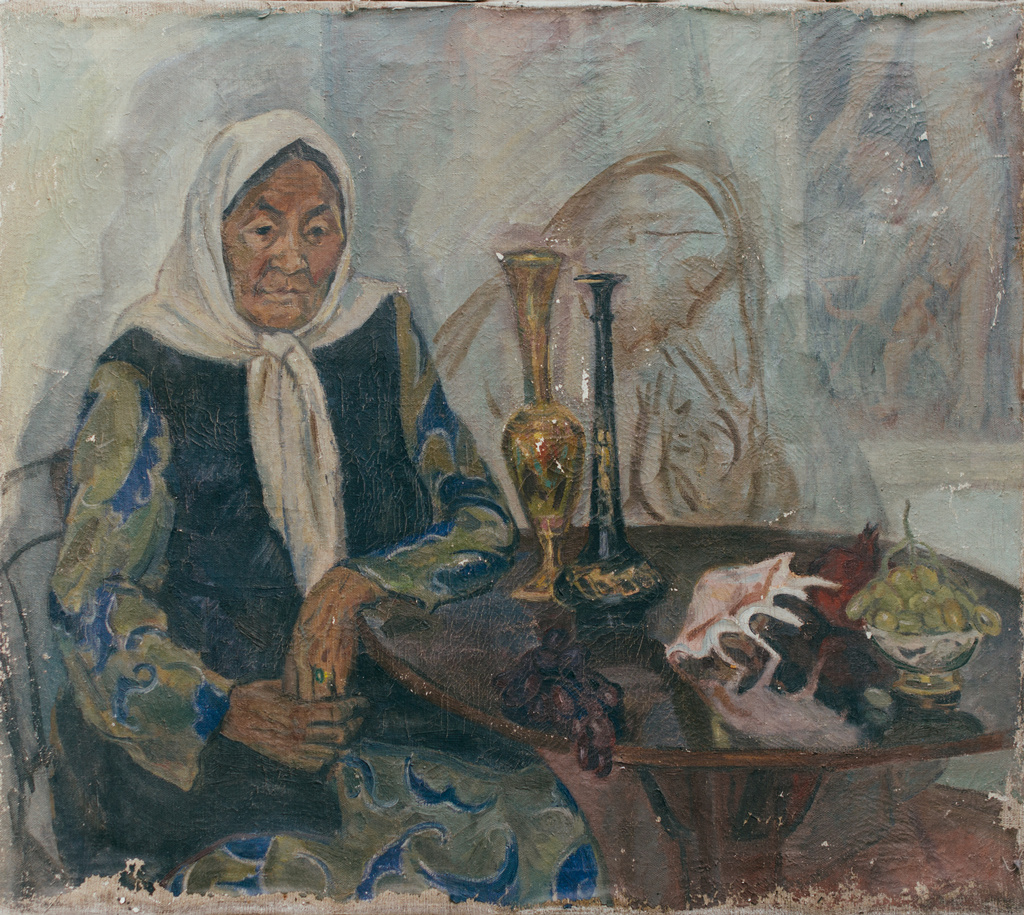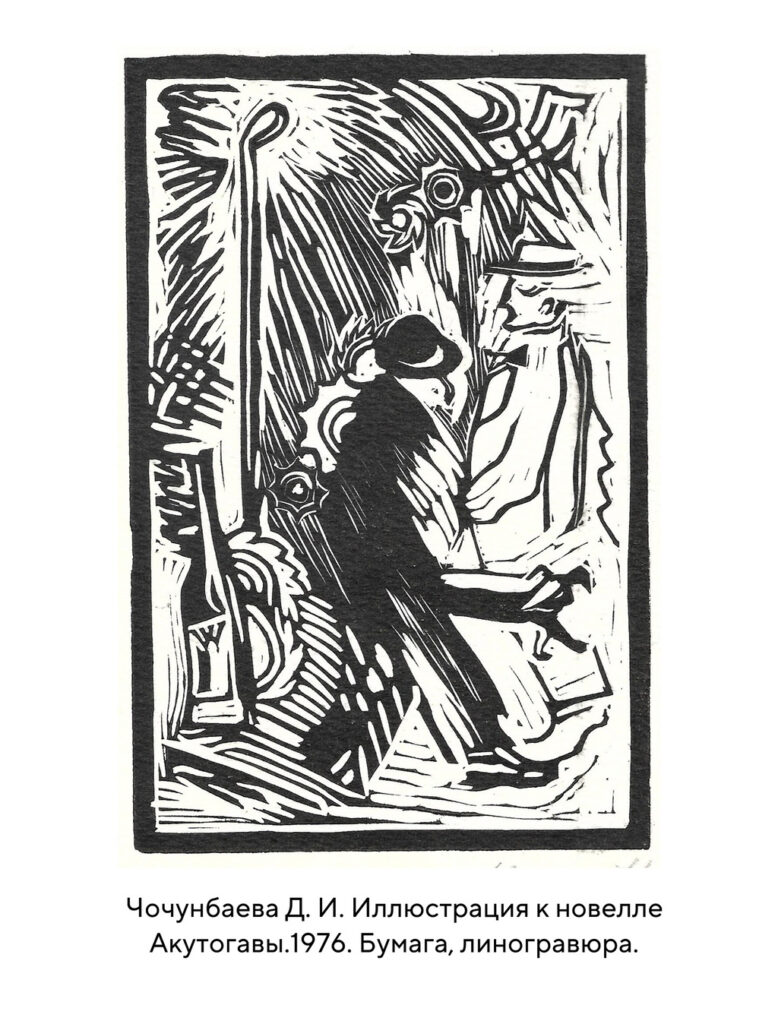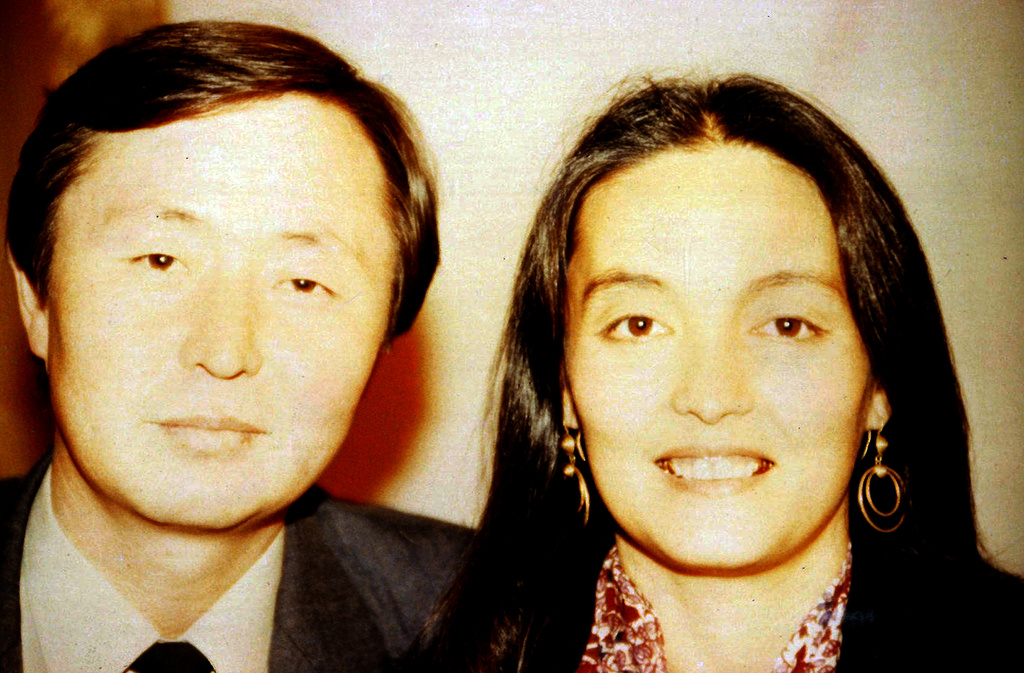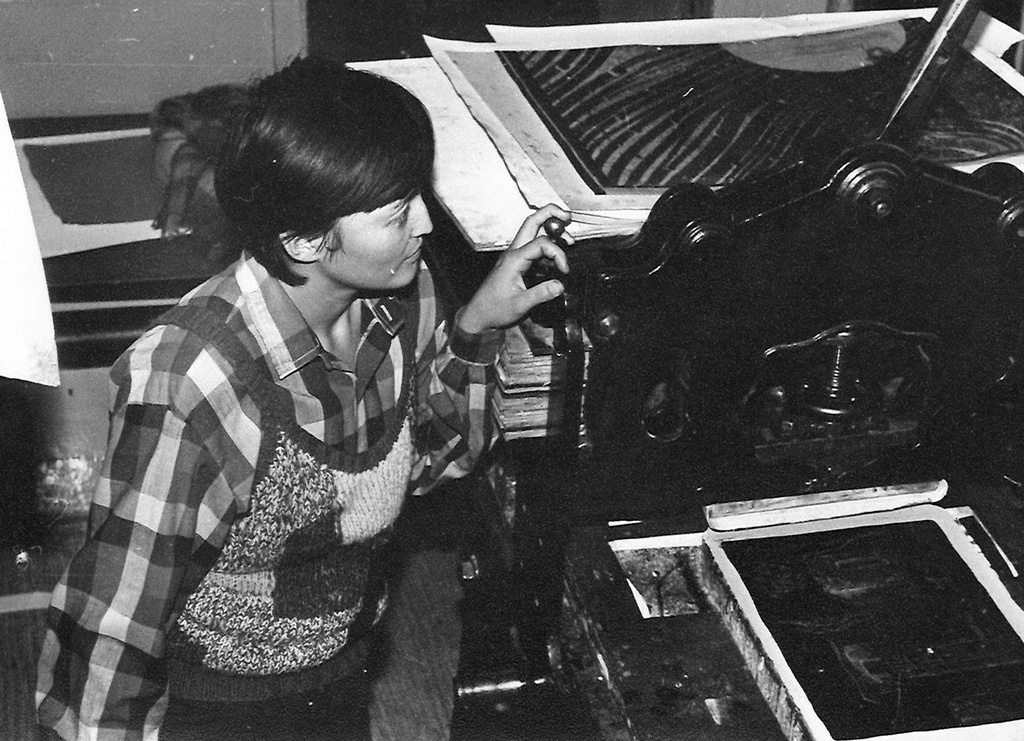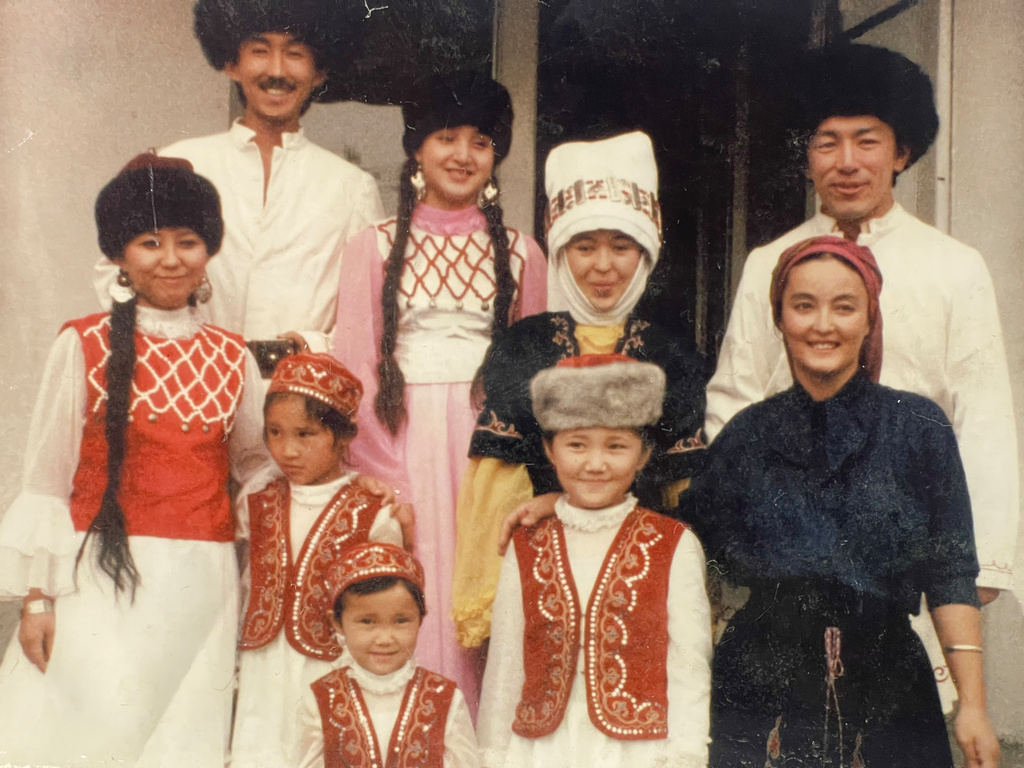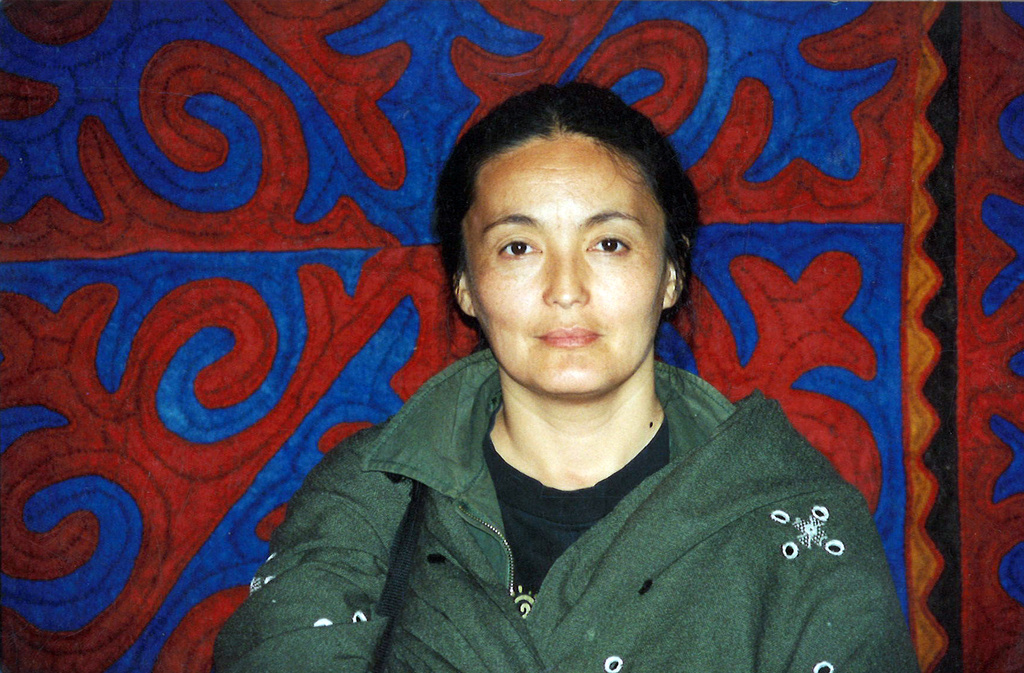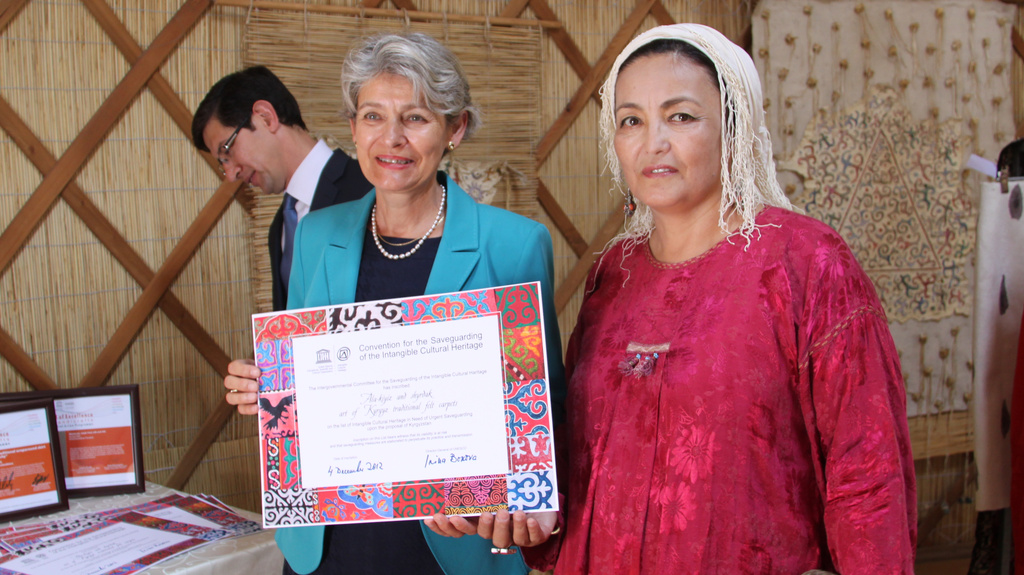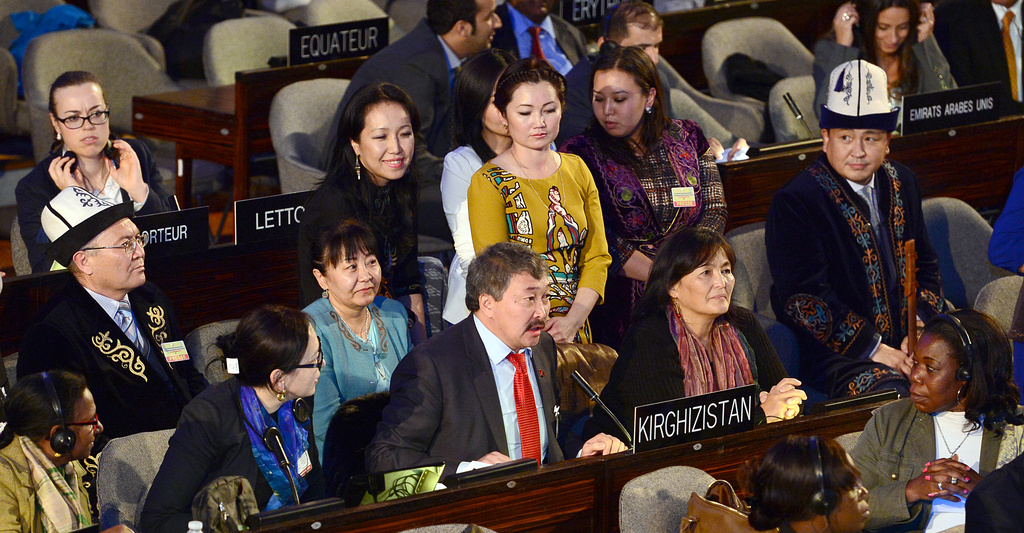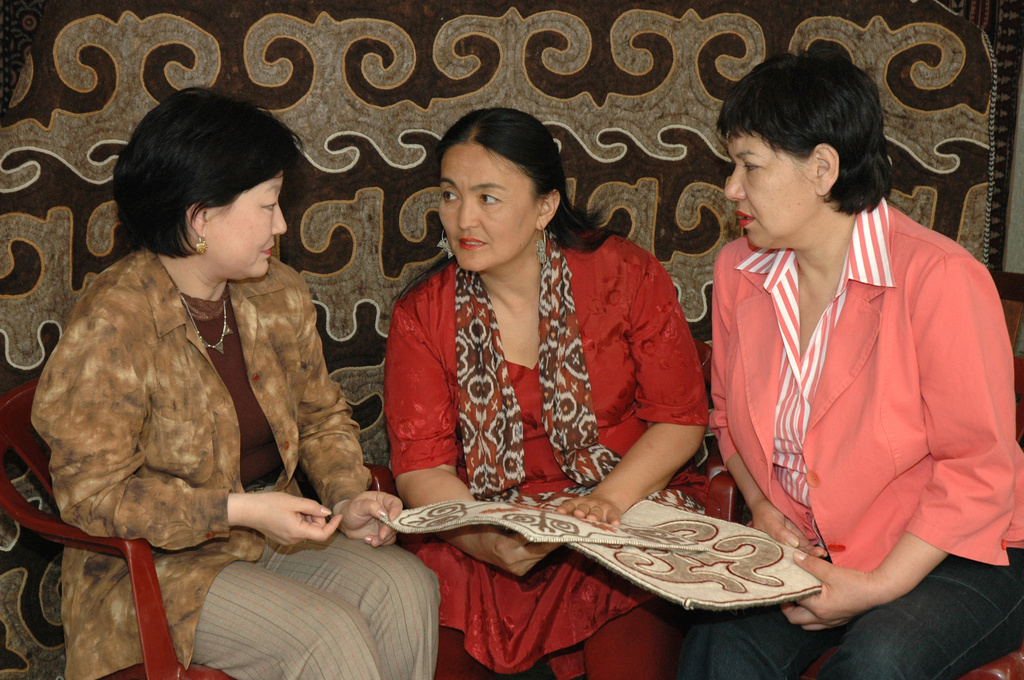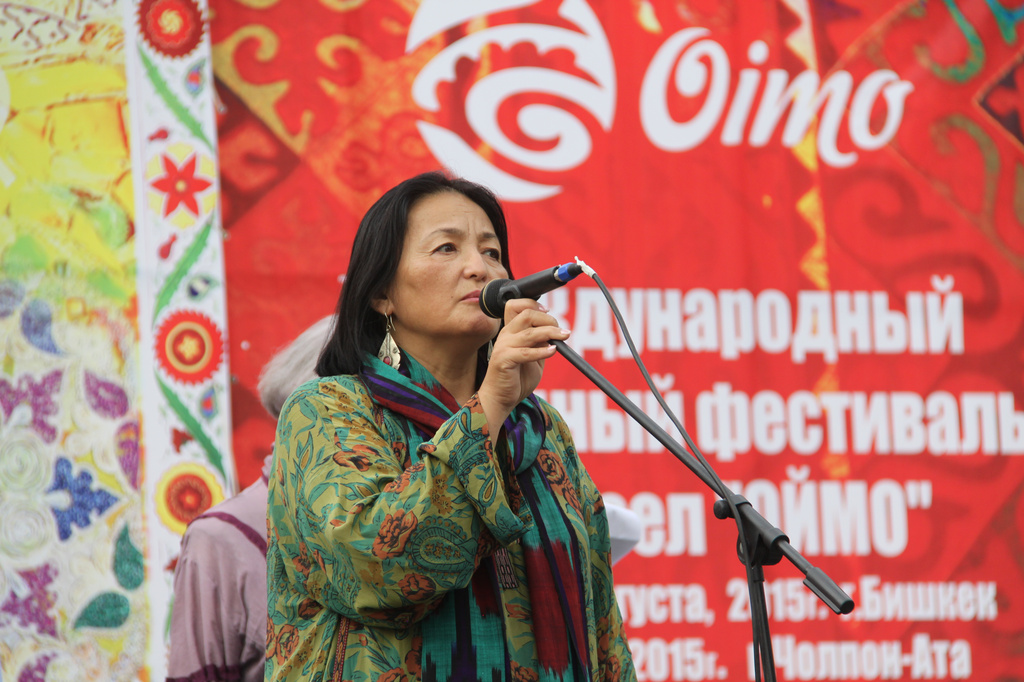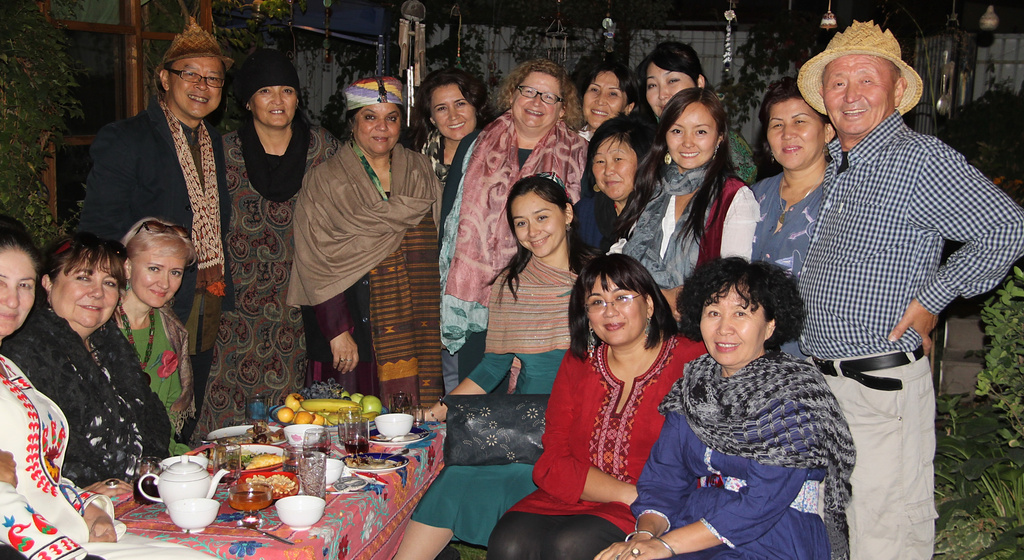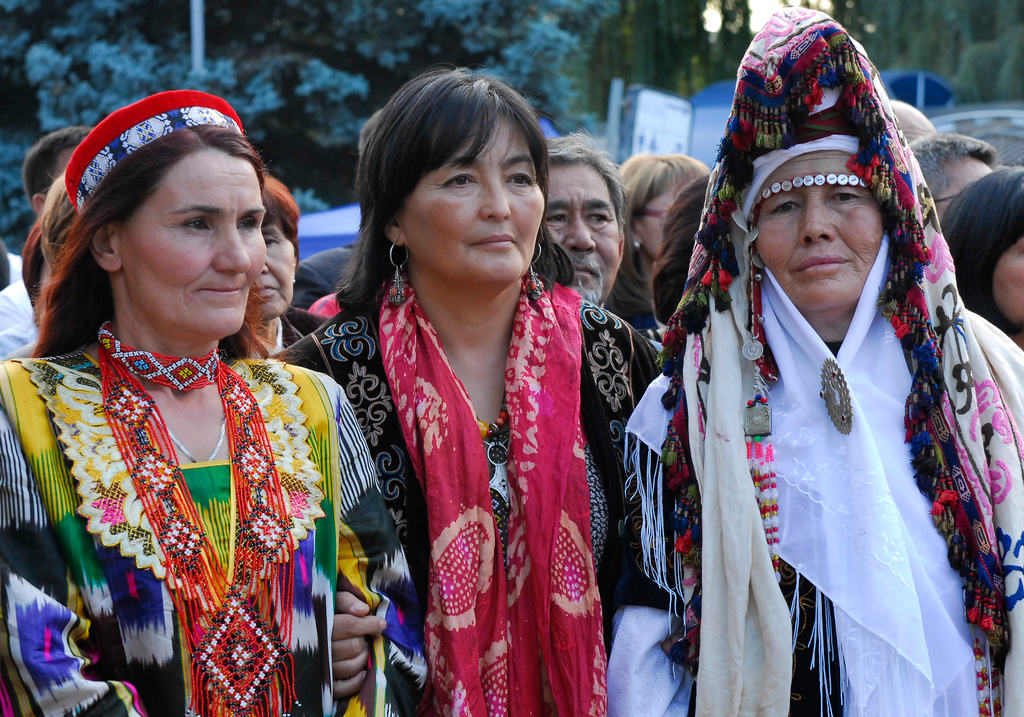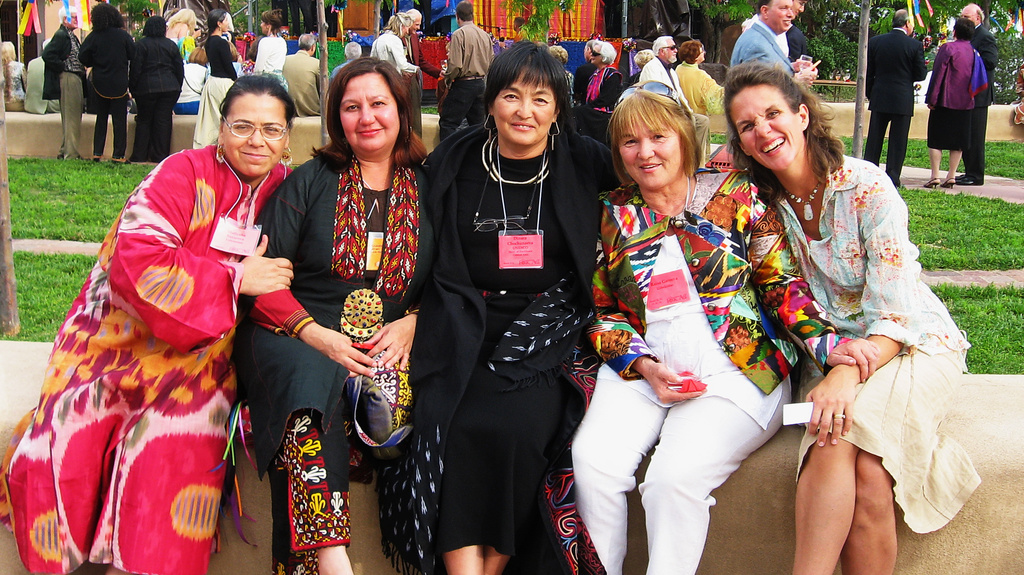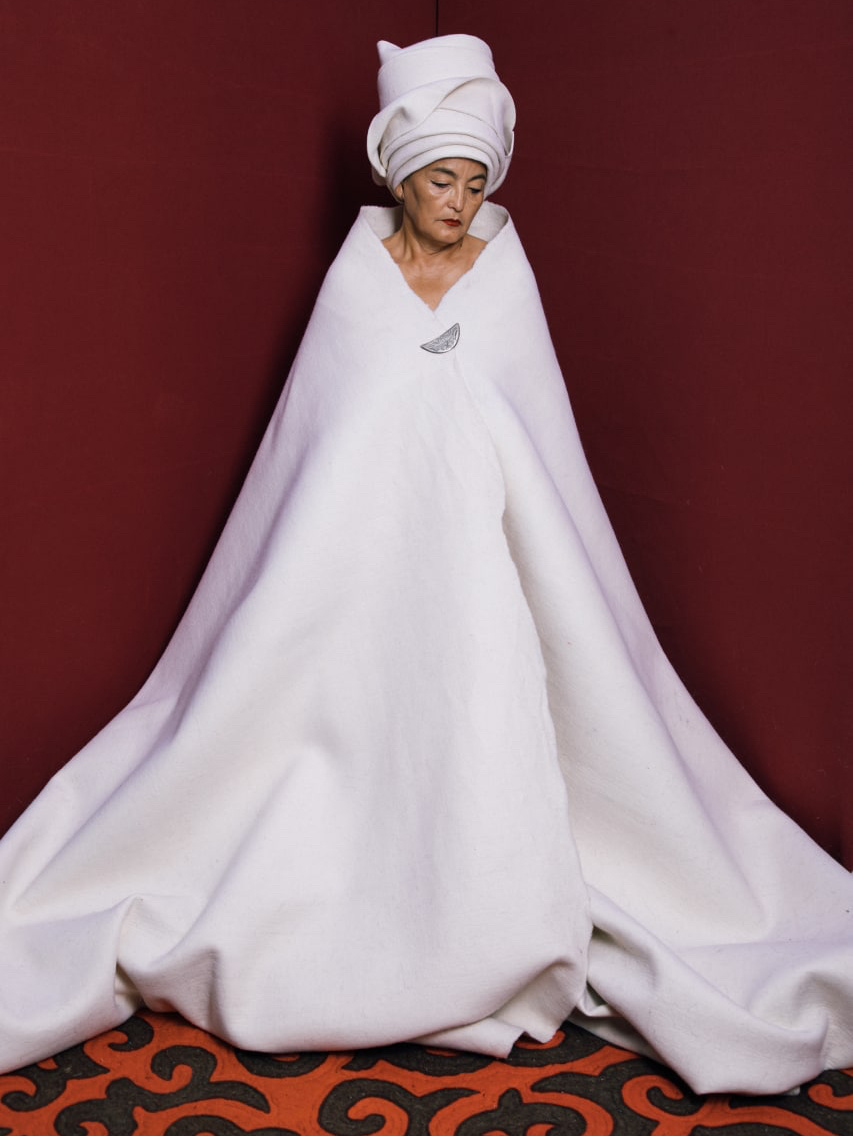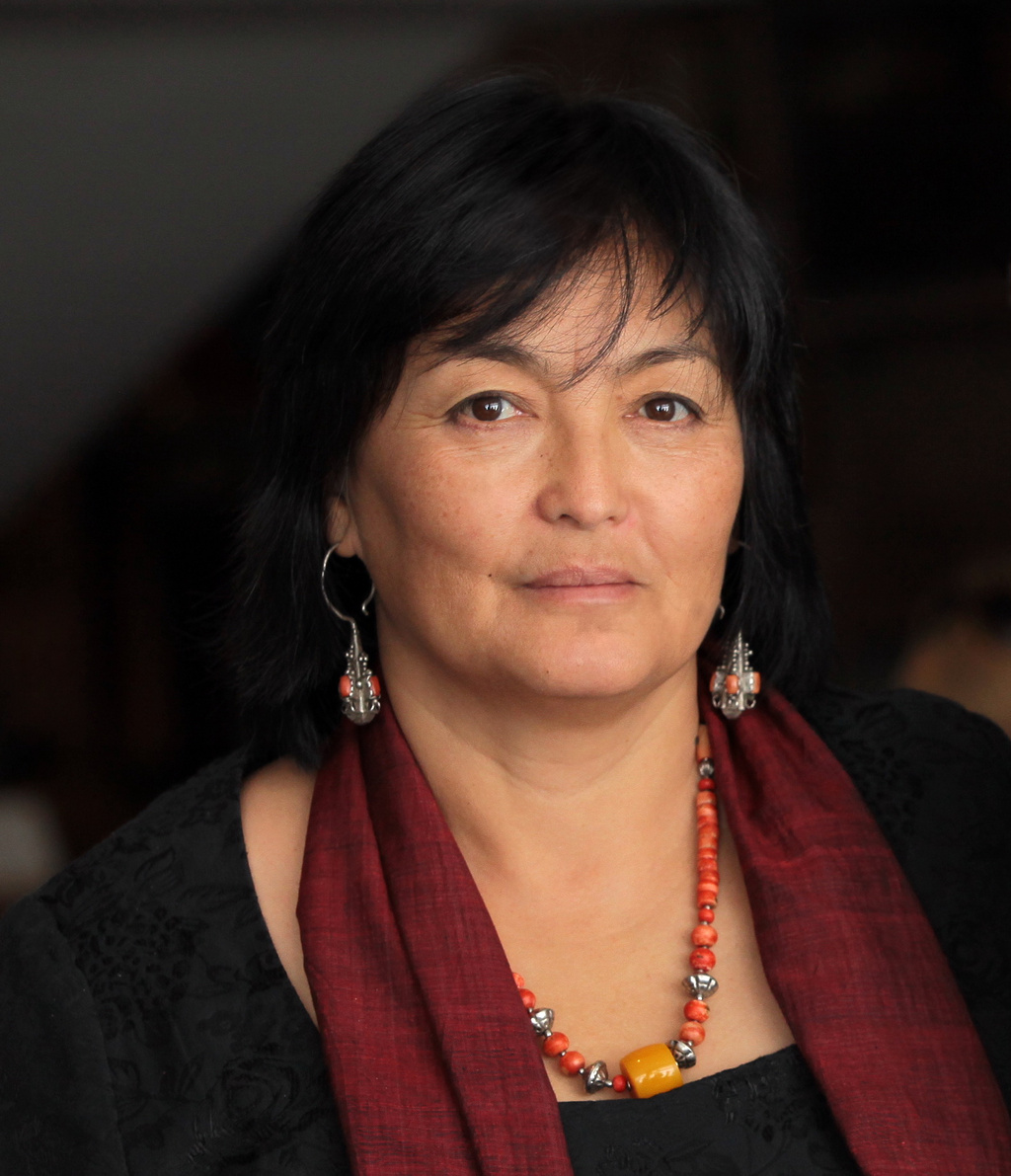
In loving memory of Dinara Chochunbaeva by Altynai Osmoeva
“Бейиш эненин таманы астында”
“Paradise is under the mother’s feet.”
Kyrgyz proverb
Dinara is my mother’s name, Dinara Chochunbaeva.
“Dinar” is the transliteration of the Arabic دينار) dīnār), borrowed via the Syriac dīnarā from the Latin dēnārius. Her name carries the meaning of gold and silver coins — a symbol of wealth and value. In many cultures, a name given at birth is a prayer for the life to come. “Dinara” reflects who my mother truly is — a treasure, a free spirit rich with courage and mercy, a mind abundant with creativity and curiosity, a soul lit with light and passion, and a heart overflowing with generosity and kindness.
Grace was one of Heaven’s many blessings upon her. Through every season of her life, she carried herself with dignity, sharing her talents and gifts with all who crossed her path. I see her still — a generous spring at the heart of the world, ever overflowing, quenching the thirst of all who came to her, renewing and uplifting the human spirit.
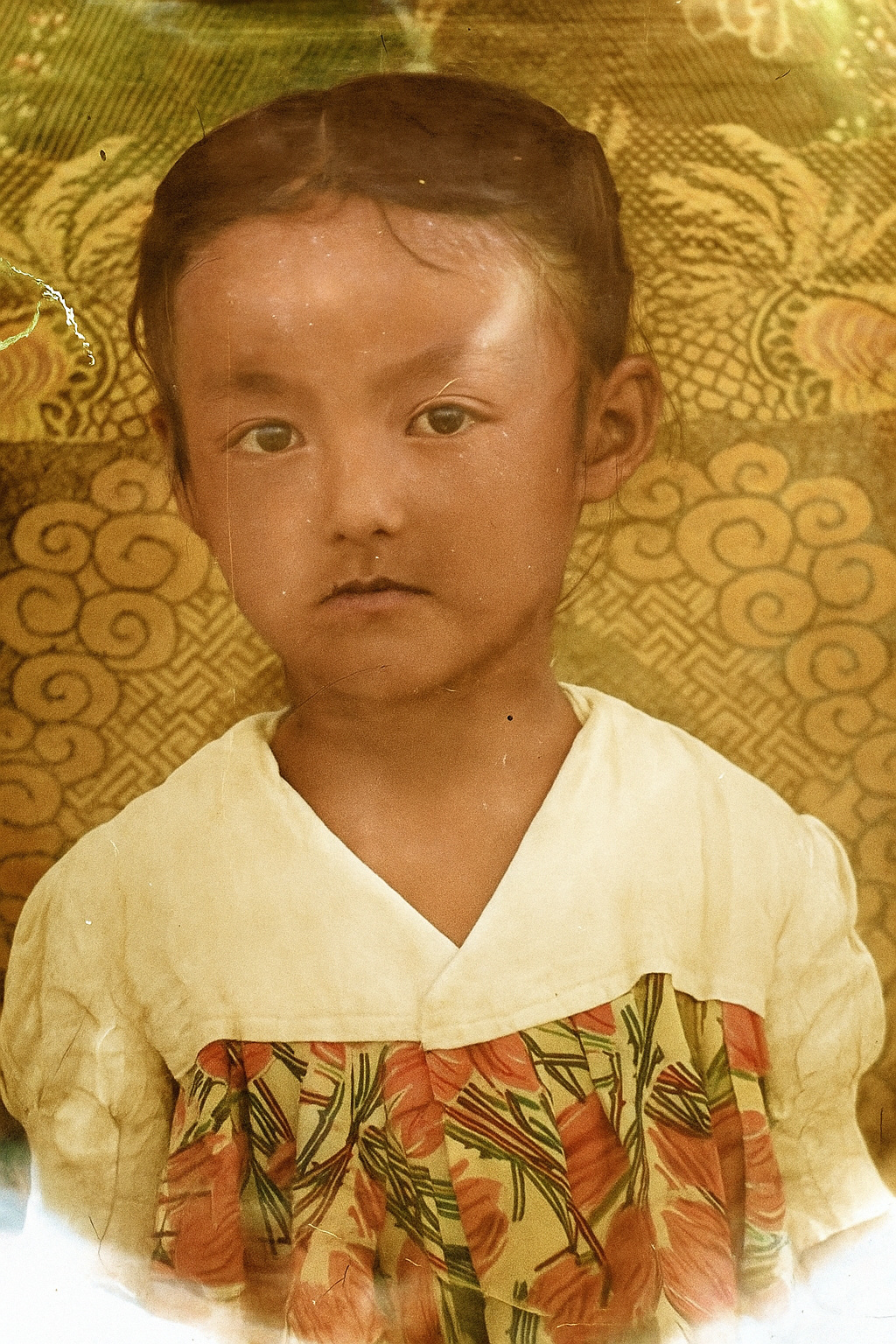
When I look upon an old, faded photograph, my eyes linger on the face of a child — wide-eyed, open to the world, her gaze piercing yet full of wonder. Who could have foreseen that this little girl would one day grow into a woman whose life became a testament to service — to people, to purpose, and to the arts?
She would become a steadfast pillar of her family and community, a faithful guardian of traditional culture, a champion of artisans and world crafts, an inspiring educator, a celebrated film star, a muse, an artist, and a true friend whose kindness touched lives across the globe.
It is impossible to capture all that Dinara was in the limits of language. Yet I remember how, with her characteristic humility, she once reflected on her life’s journey and simply called herself “a daughter of her people and a product of her time.”
To me, she will always be my universe, my muse, my hero, and my mother — the one I will love for all eternity.
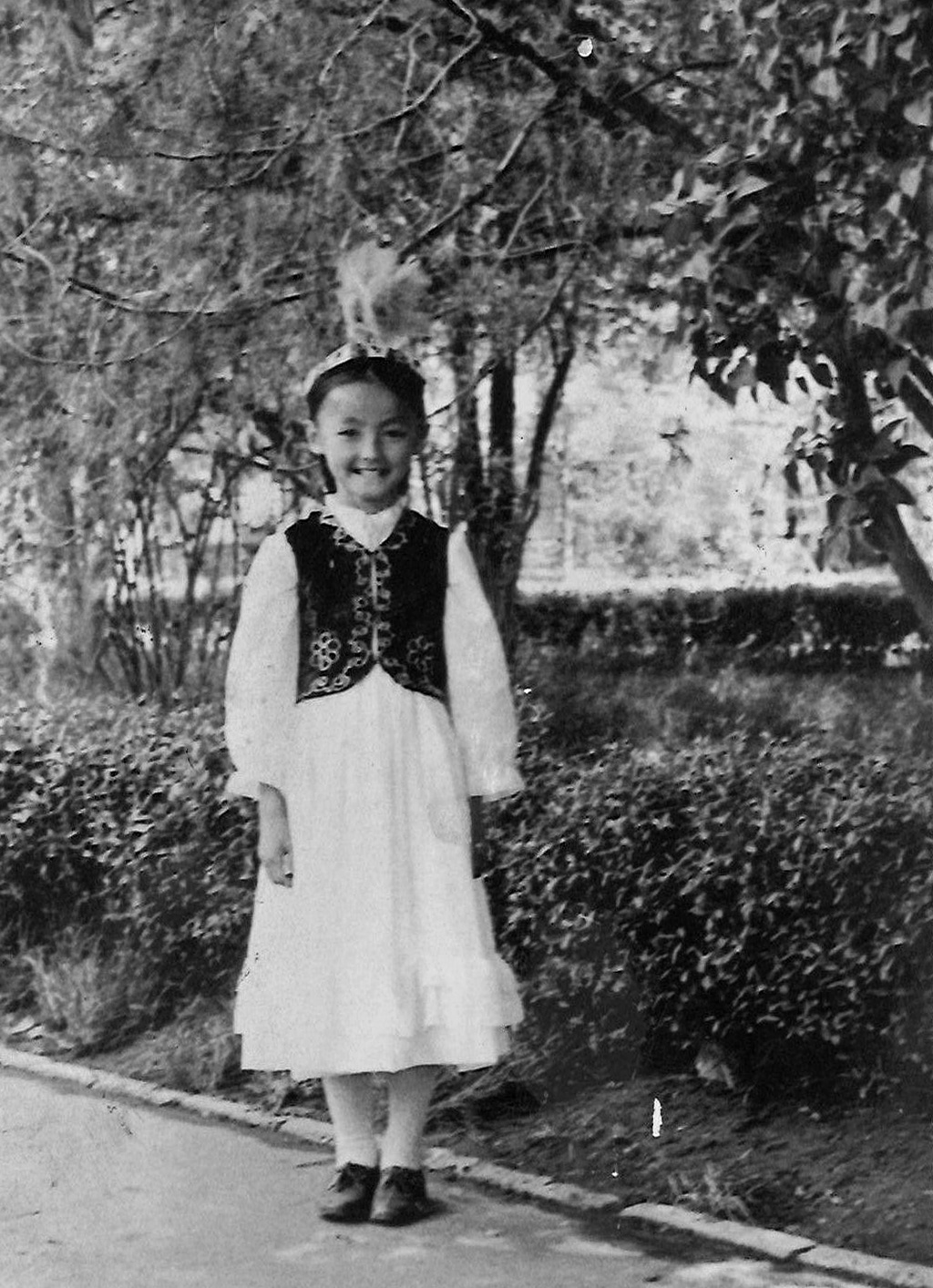
Dinara was born on September 5, 1956, in Frunze—then part of the Kyrgyz SSR—to her father, Ilimbek, and mother, Koken, both scholars and professors at the National University. She was the eldest of four children, with three younger brothers—Askar, Aidar, and Akbar—a role that instilled in her a lifelong sense of duty and responsibility for the care of others.
Her paternal grandmother, Shakil apa, a strong-willed woman and the undisputed ruler of the household, became Dinara’s greatest mentor, chess opponent, and steadfast protector — especially from the ever-present and much-disliked household chores, as Dinara would later recall with laughter.
A quiet and introspective child, she spent countless hours immersed in books and drawing—two joyful pursuits that became her refuge from her earliest years and remained a source of comfort throughout her life. She often remembered singing as she drew, finding no greater joy than observing the world around her and expressing her feelings through creativity.
After school, her afternoons were filled with practising the piano, playing chess with Shakil apa, spending time with her childhood best friend, Indira, or studying in the studio of the legendary Soviet sculptor Olga Manuilova — a guiding influence and mentor in both art and life. My mother often spoke of her greatest teachers and mentors, noting with pride that they were all talented, unique, and strong women. Following her passions and dreams, she enrolled at the Chuikov Arts Academy to become an artist.
- Dinara at her happiest times
Just before she turned fourteen, a life-changing event shifted her destiny. Surpassing more than 3,000 other young girls, she was chosen to play the leading role of Asel in I Am Tian Shan, directed by Irina Poplavskaya and based on Chyngyz Aitmatov’s 1961 classic My Poplar in a Red Headscarf.
The novella, psychologically and emotionally rich, explores universal human themes—love and loyalty, betrayal and redemption, moral choice, and the resilience of the human spirit. Asel, the central character, stands as a symbol of soulful strength, moral purity, and unwavering devotion to love.
When the film premiered in 1973, Dinara became a celebrity across the Soviet Union almost overnight, at the tender age of seventeen.
When the film premiered in 1973, Dinara became a celebrity across the Soviet Union almost overnight, at the tender age of seventeen. In bringing Asel to life, she embodied the ideal of a woman, becoming an enduring icon in the hearts of many. Yet, she disliked the noisy attention and lifelong fame that came with that single role, and she regretted how it altered her life.
- Dinara Chochunbaeva
- Dinara Chochunbaeva
- Dinara Chochunbaeva
- Dinara Chochunbaeva
- Dinara Chochunbaeva
- Dinara Chochunbaeva
Later, she told me that as an artist, she longed for the quiet of her studio, where she could explore her inner world and express herself on canvas. Acting, she said, demanded an extrovert’s presence — feelings performed for the screen — which inevitably drew public attention, admiration, scrutiny, and jealousy. But destiny had chosen her, and she bore it with resilience, and at times, with much-needed humour.
After winning a scholarship, she attended the Moscow Polygraphic Institute, graduating in 1978 with a degree in Decorative Book Design and Publishing. It was there she met my father, Urmatbek — first a friend, later her lifelong partner, and the father of her three children: Iskender, Bakai, and me, Altynai.
Their student years were a tapestry of joy and struggle—bright threads of youthful adventure woven together with the frayed edges of hardship. My father would often joke that his greatest challenge was not his studies, but fending off the endless stream of admirers drawn to her beauty and spirit.
Her professional career began as an art editor at the Kyrgyzstan publishing house. By 1980, her leadership and creative vision brought her to the Board of the Union of Artists of the Kyrgyz SSR.
In the turbulent early days of the Soviet Union’s collapse—when people’s worldviews, political systems, and ways of life were being upended—she would recall the extraordinary challenge of raising a family while trying to find stability, preserve personal and cultural identity, and navigate an uncertain future.
In the early 1990s, under the influence of Roza Otunbaeva, a pioneering woman leader and politician, Dinara was persuaded to dedicate several years to public service rather than her own artistic ambitions—a choice that would change her life forever. She stepped away from her dream of becoming an artist and turned toward a life of service, beginning with the creation of the first Children’s Center for Aesthetic Education, where children of all abilities could grow, learn, dance, sing, play, and create—just as she once had in Manuilova’s studio.
- Art editor at the “Kyrgyzstan” publishing house.
- Director of the Children’s Center for Aesthetic Education.
After building the CCAD from the ground up and leading it for more than 16 years, she embraced a new mission: safeguarding the intangible cultural heritage of Kyrgyzstan and Central Asia, a region she loved with all her heart. She mentored women and men from rural communities, offering them a path to prosperity through the revival of traditional crafts.
In 2000, she founded the Central Asia Crafts Support Association (CACSARC), which at its height united more than 5,000 artisans across the region. As president, she opened markets, created training opportunities at home and abroad, and worked for international recognition of their crafts. From 2004, she served as regional coordinator for UNESCO and the World Crafts Council’s Award of Excellence for Handicraft Products in Central Asia, setting new standards for quality and authenticity.
Between 2012 and 2014, through the efforts of the regional UNESCO team, the generosity of Karganbek Samakov, and the expertise of Dinara and her colleagues, three treasures of Kyrgyz culture were inscribed on UNESCO’s Lists of Intangible Cultural Heritage: the art of shyrdak and ala-kiyiz felt carpets, the boz-ui — the nomadic home of the Kyrgyz and Kazakh peoples—and the epic trilogy of Manas, Semetey, and Seitek.
- Irina Bokova Director-General of UNESCO and Dinara at the official ceremony of presenting the certificate of inscription of Ala Kiyiz and Shyrdak felt carpets into the List of ICH in need of safeguarding.
- Kyrgyz team at the UNESCO headquarters.
I had the privilege of working with my mother on the remarkable book Shyrdak, a project that perfectly encapsulates her deep passion for preserving and promoting Kyrgyz cultural heritage. Authored and published through the Central Asian Crafts Support Association’s Resource Center in Kyrgyzstan (CACSARC-kg), with the approval of the National Commission of the Kyrgyz Republic for UNESCO and financial support from Karganbek Samakov, this 360-page trilingual publication (Kyrgyz, Russian, and English) stands as a monumental tribute to the art of Kyrgyz felt carpets. For Dinara, Shyrdak was far more than a book—it was a heartfelt homage to the master artisans, the sacred traditions, and the breathtaking landscapes of Kyrgyzstan, all interwoven in the intricate patterns of the shyrdaks. Her dedication brought together decades of research, dating back to the mid-1980s, and the invaluable contributions of handicraft specialists and CACSARC-kg’s ongoing efforts. Through this work, Dinara not only documented a vibrant tradition but also gave it new life, ensuring its legacy for future generations. She was planning to continue and publish books on Ala Kiyiz and Boz Ui – Kyrgyz yurt.
Her influence extended far beyond Kyrgyzstan. As Vice-President for Central Asia in the World Crafts Council – Asia Pacific Region (2012–2016), she brought the artisans of Central Asia into the global spotlight. She spoke often of her gratitude for the good fortune of meeting extraordinary colleagues and friends with whom she shared both purpose and mission.
Inspired by the International Santa Fe Folk Art Market, she founded the International Festival of Traditional Crafts and Culture “OIMO” in 2006—a vibrant celebration that continues to gather artisans, tourists, and cultural enthusiasts from around the world each summer. Dinara loved bringing people together, and at the welcome dinner in their home, Urmat always cooked his famous plov.
- Opening of the International Oimo Festival
- Traditional Welcome dinner for friends and colleagues at home before OIMO
- Santa Fe International Folk Art Market
Dinara’s life and her kindness touched and transformed countless lives. Many artisans remember her as a sincere listener, a steadfast leader, a tireless champion, and a generous mentor who opened doors to new opportunities—offering them, and their communities, hope for a brighter future. Her character shone through in her integrity, generosity, and vision..
Dinara Chochunbaeva is part of the living roots of the Kyrgyz identity. As we honor her life, we are reminded that heritage is not a relic of the past, but a living, breathing source of strength. Her journey calls us to nurture creativity in both young and old, to cherish our traditions so they may be carried forward by future generations, and to treat one another with kindness.
Mama, you are the heart and soul of our family. You gave time without measure, loved without condition, and carried yourself with grace. Your determination built bridges between people and cultures, your voice gave hope, and your spirit uplifted others. Though you are no longer here for me to hold, I will carry you with me always. Your husband, children and grandchildren Amir, Aiturgan, Altai and Saikal miss you every day and love you forever. You are in our hearts, in every thread of our lives and in the memory of your people.
Our deepest gratitude goes to Kevin Murray, my mother’s respected colleague and dear friend, for honoring her memory by dedicating the September issue to her — a gesture that reflects the love and respect she inspired in all who knew her. The September issue is called Heavens. I believe my mother is in Heaven.
Altynai Osmo is a multimedia artist and activist who focuses on the free-spirited women of Central Asia. Follow @altynarty

